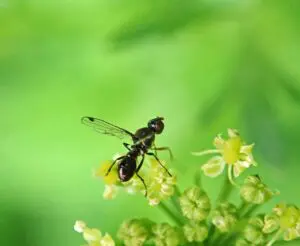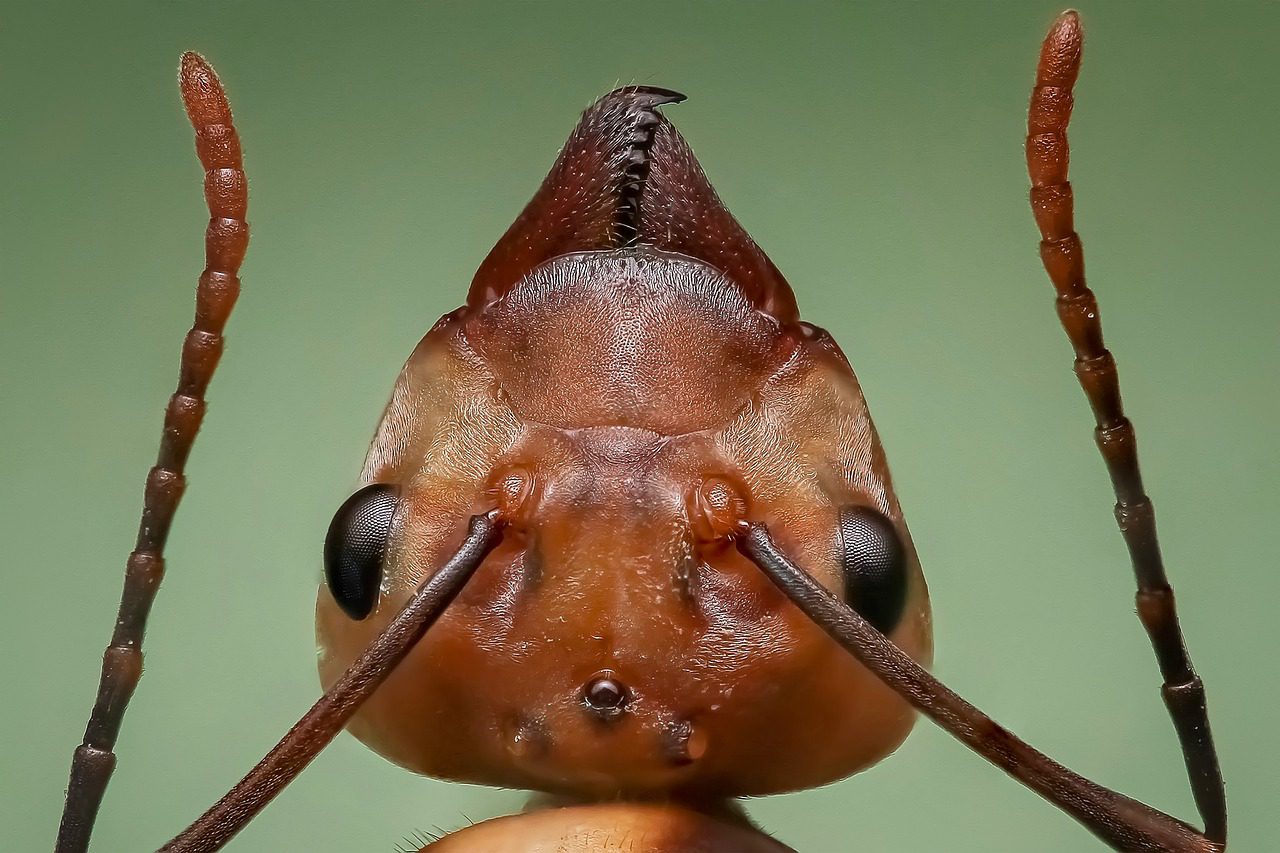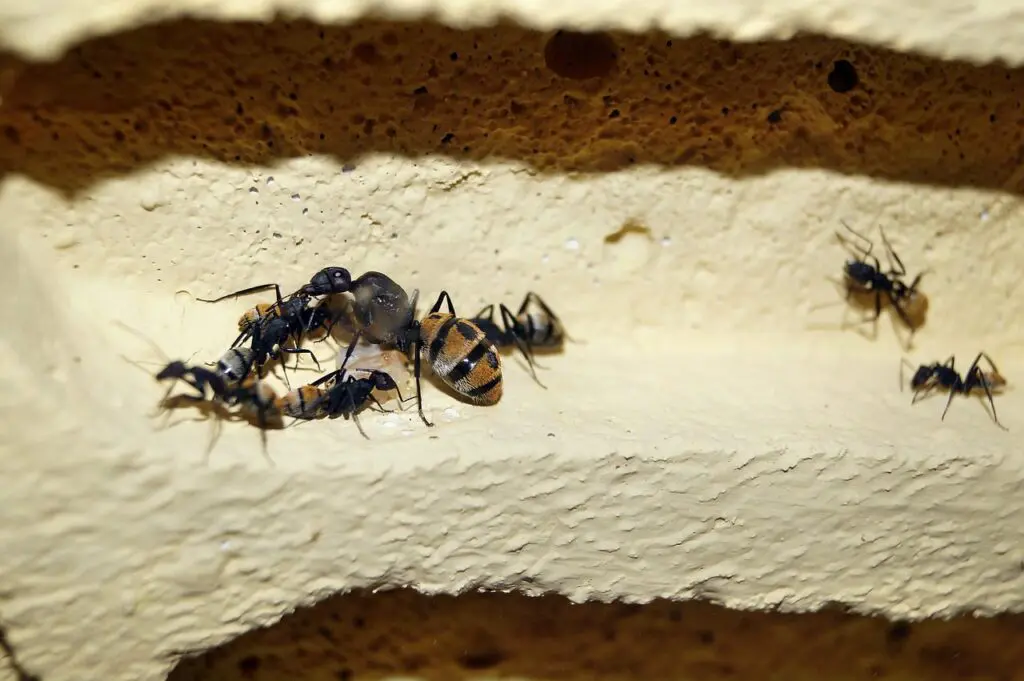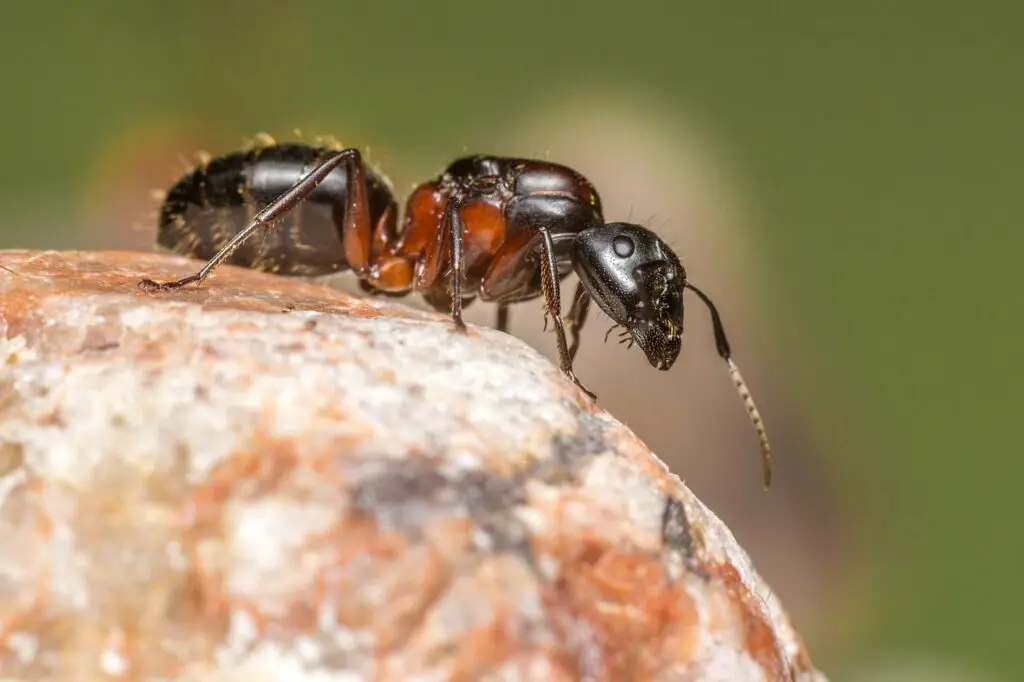

In this article, we delve into fascinating insights about queen ants and their pivotal role within ant colonies. Understanding these interesting creatures is crucial for effective pest control management.
What do Queen Ants Look Like?
A queen ant is at the top of the ant colony hierarchy and has unique characteristics that set her apart from other members of the colony. Unlike typical worker ants, queen ants are usually larger in size and have elongated abdomens that allow for vast egg production and storage. The thorax of queen ants are enlarged in order to make room for their powerful flight muscles. However, queen ants usually shed their wings after mating.
The most noticeable feature of queen ants is their reproductive system, which allows them to lay eggs consistently in order to maintain the population of the colony. There are a variety of ant species and depending on the species, queen ants usually vary in coloration and range from dark brown or black to light yellow. Their exoskeletons may also showcase a matte or glossy appearance.
With their distinctive appearance, queen ants are actually not as visible as worker ants. This is because they spend their time in the safety of their nest, looking after their brood and ensuring the colony’s continued population growth.
Do Queen Ants Have Wings?
We briefly mentioned that queen ants have powerful flight muscles - but do these wings work effectively and do queen ants fly? Queen ants only have wings during a specific stage in their life cycle. Unlike winged ants which are reproductive workers that are produced by mature colonies for mating purposes, queen ants shed their wings after mating and after establishing a new colony. Once they have found a suitable site for nesting, queen ants break off their wings as they prepare to lay eggs and take up the role as the central reproductive figure within the colony.
How Big Are Queen Ants?
The size of queen ants depends on their species and their age. Usually, queen ants are bigger than worker ants, with some ant species having queens that range from a few millimeters to well over an inch in length. But in comparison to worker ants, queen ants are usually larger and have a stronger appearance.
Where Do Queen Ants Come From?
Queen ants are created through a process known as nuptial flight or swarming. At specific times of the year, and triggered by environmental factors such as humidity and temperature, mature ant colonies release winged ants that are known as alantes.
Once released, these flying ants mate in mid-air and fertilized females then land and shed their wings, becoming queen ants. These newly mated queens then search for suitable nesting sites to establish new colonies.
Once a queen ant identifies a suitable location, she creates a small chamber and starts laying her eggs. In the beginning, she raises the first batch of worker ants on her own until they are capable of foraging and caring for the colony. This is when the colony begins to grow and the queen’s responsibility becomes egg-laying, while worker ants tend to her needs and care for her growing brood.
Do queen ants leave the nest?
In many cases, queen ants don’t leave the nest voluntarily as their primary purpose is to remain within the safety of the nest - to continue growing the population. However, there are some exceptions. For example, during the nuptial flight or swarming phase, when young queen ants emerge from their potential nests to mate and create new colonies.
Once a queen ant has mated successfully and established her very own colony, she usually remains in the confines of the nest for the rest of her life, focused solely on laying eggs and maintaining the colony.
How Many Queen Ants Are in a Colony?
The number of queen ants in a colony depends on the species of the ants and the reproductive strategy of the colony. In monogynous colonies, there is usually one queen ant that reigns over the entire colony and she is responsible for laying eggs and maintaining its population.
However, polygynous colonies exist and these colonies have multiple queen ants that coexist. The presence of multiple queens enhances the colony's capacity for reproduction and provides even greater strength against environmental threats. The specific number of queen ants in a colony is influenced by factors such as resource availability, nest size, and genetic predisposition.

How Long do Queen Ants Live?
The lifespan of queen ants varies based on factors such as species, environment and reproductive activity. In general terms, queen ants have a longer lifespan than worker ants, with some species able to live for several years or even decades under the right conditions.
During the beginning phase of colony establishment, queen ants are highly active and are renowned egg-layers, producing thousands of offspring. However, as the colony grows and matures, reaching capacity, the queen's reproductive rate declines. In monogynous colonies, where there is only one queen, the death of the queen has significant consequences on the survival of the colony. Without a queen to lay eggs, the population will decline until it ceases to exist. However, in colonies with multiple queens, the death of one queen has less of an impact as other queens are able to continue laying eggs and sustain the colony.
How Long Do Ants Live Without a Queen?
In ant colonies, the survival of worker ants depends on the presence of a queen. Without a queen to produce new eggs, the lifespan of the worker ants becomes significantly reduced.
In most cases, worker ants may only survive for a few months to a year without a queen to replenish the colony's population. As the existing worker ants age and die off, the colony's numbers dwindle, eventually leading to its demise if a new queen is not established.
How Many Eggs Does a Queen Ant Lay?
The reproductive capacity of queen ants varies depending on factors such as species, age, and environmental conditions. Generally, queen ants are prolific egg-layers, capable of producing thousands of eggs over their lifetime.
In some species, a single queen can lay hundreds of eggs per day during the peak of her reproductive activity. The exact number of eggs laid by a queen ant can vary greatly, with some queens continuing to lay eggs throughout their lives, while others may gradually decrease their reproductive output as they age or as the colony reaches its maximum capacity.

In Conclusion
In this article, we have explored several amazing facts about queen ants. We have taken a look at their appearance, reproductive behavior, lifespan and significance within ant colonies.
Understanding the characteristics and behaviors of queen ants is essential for effective pest control management, as identifying and removing queen ants can help disrupt the reproductive cycle of ant colonies and prevent infestations.
For comprehensive ant pest control solutions, trust Excel Pest Services to address your home pest management and yard pest management needs. Our expert technicians specialize in identifying and eliminating queen ants and their colonies, ensuring long-term protection for your home or business.
Contact Excel Pest Services today for professional and effective pest control solutions.



